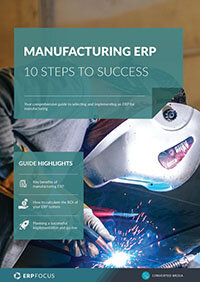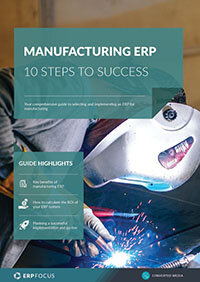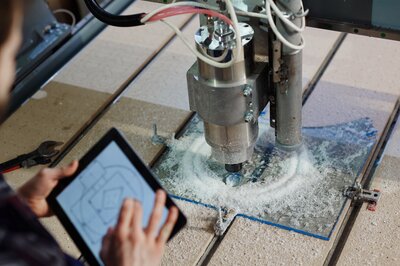Six manufacturing processes you can automate with ERP
ERP is much more than a repository for collected business data. ERP is much more than software that includes the transactions that must be completed throughout our business processes. ERP is the origin of manufacturing process automation too.
1. Inkjet printing
Think of the printer marking on the coil of wire cable you just bought at your local hardware store. That mark shows the wire gauge, the number of conductors, and lots of other data you can use to know you have the exact product for your application. How did that mark get on the cable? The manufacturer used an inkjet printer much like the one on your own desk. All the data for any specific job are included in the job parameters and read as needed by the printer. As the cable passes by the print head, a new mark is printed at specific spacing along the cable. And it all happens automatically.
2. Extrusion
Plastic extrusion is a process where pellets are melted and forced into a specific shape. Melting temperature and extrusion pressure are variables and a good extrusion is possible by adjusting either of these. Your ERP can contain the specifics for any product you make. When the temperature and pressure meet the starting levels, ERP begins tracking the quantity of product extruded automatically.
3. Laminating
Think of a sheet of plywood. Veneers of thinly sliced wood are laid in a cross lamination pattern and glued together. ERP tracks the veneer thickness, the glue required, and the number of laminations for the product being made today. That data moves from ERP to the production line as needed and a new sheet of plywood is completed accurately every few seconds.
4. Welding
The job and operation in process now calls for welding nuts at specific places on a sheet of metal. ERP has the specific drawing needed by the operator and that drawing shows on a display at the workstation. Our welder sees that 12mm nuts need to be at seven positions and 15mm nuts at three other positions. ERP also indicates a specific jig the welder should use to position those nuts precisely for perfect welding.
5. Logistics
ERP helps automate inbound as well as outbound logistics. ERP signaled a buyer to purchase needed components and have them ready at a certain date and time. ERP signaled the warehouse to move those components and others already in stock to the workstation where they will be needed ahead of the production schedule. ERP signals the warehouse to move the finished products back to shipping and shipping get details on how to package the products for the specific customers who purchased them. ERP also signals shipping to move the packaged products to the right dock for delivery on time to our customer.
6. Semiconductor finishing
A wafer is ready for thinning and dicing. ERP reads the customer specifications from a purchase order, reads the thickness, and die locations into the automated processing equipment. The needed dies are moved to plating and then to finishing where wires are automatically soldered based on instructions stored in ERP for that operation.
Think about what operations you might automate. How can your ERP help you?
Free white paper

Manufacturing ERP: 10 steps to success
Complete step-by-step guide to manufacturing ERP software

Featured white papers
Related articles
-

ERP for make-to-order manufacturing
How can ERP help your make-to-order manufacturing business thrive?
-

Secret KPI: Why Your ERP Implementation Team Matters More Than Software
Learn how Godlan ensures successful ERP implementation for manufacturers with proven strategies &...
-

Shop floor management: 4 ways ERP can improve efficiency
Learn about the shop floor efficiencies that can be realized through the implementation of manufa...



